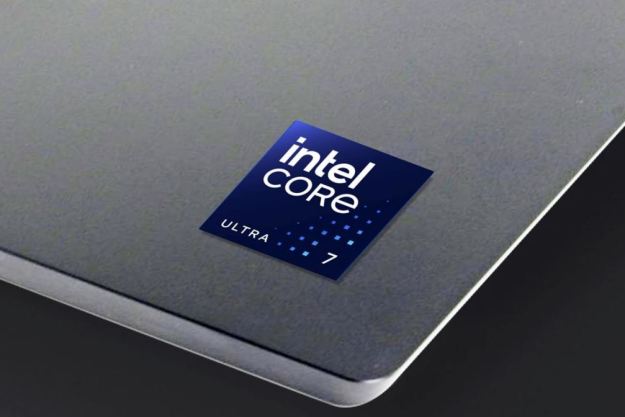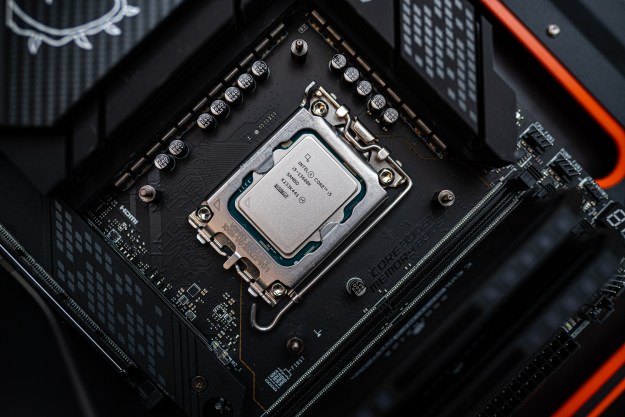After talking up Alder Lake for more than a year, Intel has released all of the CPUs in its 12th-generation range. This new generation brings the same slew of performance improvements worthy of our roundup of the best processors but also marks the first time Intel has used its 10nm manufacturing process on desktop and the first slot-in CPUs with a hybrid architecture.
There’s a lot to talk about with Alder Lake. We rounded up everything you need to know about 12th-gen Alder Lake processors, including how much they cost, what kind of performance you can expect, and how they work with new Z690 motherboards.
Pricing and availability

The first batch of Alder Lake chips arrived on November 4. The company announced them during the Intel Innovation event on October 27, revealing six new CPUs to kick off the range. The Core i9-12900K was the original flagship model, but in April 2022, the Core i9-12900KS was launched and became the new flagship. Many models also have an “F” variant, which means the integrated graphics are disabled, and F models are also cheaper than their non-F counterparts. There are now seven 12th-gen CPUs that are unlocked:
- Core i9-12900KS — $739
- Core i9-12900K — $589
- Core i9-12900KF — $ 564
- Core i7-12700K — $409
- Core i7-12700KF — $384
- Core i5-12600K — $289
- Core i5-12600KF — $264
Intel announced a further 22 Alder Lake processors in early 2022 that have since released. These chips support the rest of the range, offering locked variations of the above models, as well as inexpensive Core i5 and Core i3 options.
At least in the U.S., Intel didn’t raise prices much over 11th-gen chips. The i9 and i5 models have seen a slight bump, while the i7’s pricing is the same as the previous generation. Despite some price bumps, Intel’s CPUs are generally priced lower than AMD’s Ryzen CPUs, which is notable since Intel has usually been the more expensive option.
The box designs are mostly unchanged from the previous generation. However, the flagship Core i9-12900KS and the former flagship 12900K come slotted inside a golden wafer replica in the box.
Except for the Core i9-12900K and 12900KS, the seven chips listed above don’t come with anything but the CPU. The other 22 CPUs come with one of Intel’s redesigned Laminar CPU coolers.
Specs
Intel now has 12th-gen desktop processors from 16 cores down to only two, offering options across the price and performance spectrum. Although Alder Lake is known for having hybrid architecture, only about half of the chips come with a mix of performant (P) cores and efficient (E) cores. Here’s a look at the desktop range:
| Cores | Base frequency | Max boost frequency | Intel Smart Cache (L3) | Integrated graphics | Base power | Max turbo power | |
| Core i9-12900KS | 16 (8P + 8E) | 3.4GHz | 5.3GHz | 30MB | Intel UHD 770 | 150W | 241W |
| Core i9-12900K | 16 (8P + 8E) | 3.2GHz | 5.2GHz | 30MB | Intel UHD 770 | 125W | 241W |
| Core i9-12900KF | 16 (8P + 8E) | 3.2GHz | 5.2GHz | 30MB | N/A | 125W | 241W |
| Core i9-12900 | 16 (8P + 8E) | 2.4GHz | 5.1GHz | 30MB | UHD 770 | 65W | 202W |
| Core i9-12900F | 16 (8P + 8E) | 2.4GHz | 5.1GHz | 30MB | N/A | 65W | 202W |
| Core i7-12700K | 12 (8P + 4E) | 3.6GHz | 5.0GHz | 25MB | Intel UHD 770 | 125W | 190W |
| Core i7-12700KF | 12 (8P + 4E) | 3.6GHz | 5.0GHz | 25MB | N/A | 125W | 190W |
| Core i7-12700 | 12 (8P + 4E) | 2.1GHz | 4.9GHz | 25MB | UHD 770 | 65W | 180W |
| Core i7-12700F | 12 (8P + 4E) | 2.1GHz | 4.9GHz | 25MB | N/A | 65W | 180W |
| Core i5-12600K | 10 (6P + 4E) | 3.7GHz | 4.9GHz | 20MB | Intel UHD 770 | 125W | 150W |
| Core i5-12600KF | 10 (6P + 4E) | 3.7GHz | 4.9GHz | 20MB | N/A | 125W | 150W |
| Core i5-12600 | 6 | 3.3GHz | 4.8GHz | 18MB | UHD 770 | 65W | 117W |
| Core i5-12500 | 6 | 3.0GHz | 4.6GHz | 18MB | UHD 770 | 65W | 117W |
| Core i5-12400 | 6 | 2.5GHz | 4.4GHz | 18MB | UHD 730 | 65W | 117W |
| Core i5-12400F | 6 | 2.5GHz | 4.4GHz | 18MB | N/A | 65W | 117W |
| Core i3-12300 | 4 | 3.5GHz | 4.4GHz | 12MB | UHD 730 | 60W | 89W |
| Core i3-12100 | 4 | 3.3GHz | 4.3GHz | 12MB | UHD 730 | 60W | 89W |
| Core i3-12100F | 4 | 3.3GHz | 4.3GHz | 12MB | N/A | 58W | 89W |
| Pentium Gold G7400 | 2 | 3.7GHz | N/A | 6MB | UHD 710 | 46W | N/A |
| Celeron G6900 | 2 | 3.4GHz | N/A | 4MB | UHD 710 | 46W | N/A |
| Core i9-12900T | 16 (8P + 8E) | 1.4GHz | 4.9GHz | 30MB | UHD 770 | 35W | 106W |
| Core i7-12700T | 12 (8P + 4E) | 1.4GHz | 4.7GHz | 25MB | UHD 770 | 35W | 99W |
| Core i5-12600T | 6 | 2.1GHz | 4.6GHz | 18MB | UHD 770 | 35W | 74W |
| Core i5-12500T | 6 | 2.0GHz | 4.4GHz | 18MB | UHD 770 | 35W | 74W |
| Core i5-12400T | 6 | 1.8GHz | 4.2GHz | 18MB | UHD 730 | 35W | 74W |
| Core i3-12300T | 4 | 2.3GHz | 4.2GHz | 12MB | UHD 730 | 35W | 69W |
| Core i3-12100T | 4 | 2.2GHz | 4.1GHz | 12MB | UHD 730 | 35W | 69W |
| Pentium Gold G7400T | 2 | 3.1GHz | N/A | 6MB | UHD 710 | 35W | N/A |
| Celeron G6900T | 2 | 2.8GHz | N/A | 4MB | UHD 710 | 35W | N/A |
The balance of P-cores and E-cores is different for each model. Only the P-cores support hyperthreading, so the i9 model comes with 16 cores and 24 threads, the i7 model comes with 12 cores and 20 threads, and so on. Chips without the hybrid architecture come exclusively with P-cores, which support hyperthreading.
Frequency-wise, it’s hard to lock Alder Lake down. The P-cores and E-cores run at different frequencies, so there isn’t a single number to reference. With Intel’s updated Extreme Overclocking Utility (XTU), you can tweak the P-cores and E-cores independently to dial in an overclock.
The non-K models aren’t unlocked for overclocking, though some users have managed to bypass protective measures to overclock them anyway. Although Intel says not to overclock non-K models, it can result in as much as a 33% increase in performance for midrange processors.
Performance
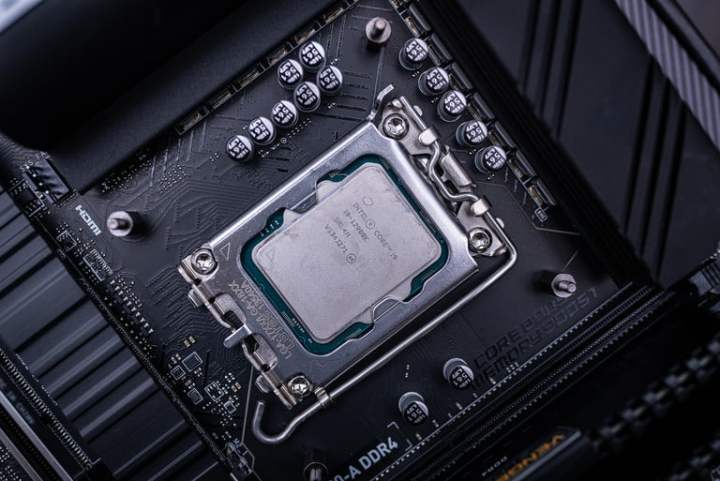
With Alder Lake finally here, we can validate some of Intel’s performance claims. In our testing of the Core i9-12900K, we found massive gains over the previous generation and a significant lead over the competing Ryzen 9 5950X. The Core i9-12900KS, which is essentially an overclocked 12900K, slightly extended Intel’s lead over the 5950X.
Gaming is a big focus of Alder Lake. Intel says the generation brings up to a 28% improvement in games like Hitman 3 over the previous generation. Some of that is on the back of Windows 11, which is optimized for Alder Lake’s Thread Director feature, and DDR5 memory, which benefits games with its increased bandwidth.
Our own benchmarks back up the improvements in games. In the synthetic 3D Mark Time Spy, the Core i9-12900KS was about 9% faster than the Ryzen 9 5950X and Core i9-10900K. In a real game, Forza Horizon 4, the 12th-gen chip managed a massive 19% lead over the other two processors.
| Intel Core i9-12900KS | Intel Core i9-12900K | AMD Ryzen 9 5950X | Intel Core i9-10900K | |
| 3D Mark Time Spy | 19,578 | 19,396 | 17,922 | 18,341 |
| Red Dead Redemption 2 | 135 fps | 137 fps | 135 fps | 129 fps |
| Assassin’s Creed Valhalla | 110 fps | 118 fps | 121 fps | 122 fps |
| Forza Horizon 4 | 238 fps | 234 fps | 201 fps | 200 fps |
| Civilization VI (turn time, lower is better) | 7.4 seconds | 7.3 seconds | 7.5 seconds | 6.5 seconds |
Still, not all games saw a benefit. Red Dead Redemption 2 is one example, as the Core i9-12900KS tied the Ryzen 9 5950X while the 12900K took a 2 fps lead. Similarly, in Assassin’s Creed Valhalla, the chip produced a somewhat lower frame rate than not only the 12900K (which is supposed to be the slower version).
Although gaming is important, Alder Lake is also focused on multitasking and content creation. In a common scenario where you’re playing a game while streaming and recording, Intel claimed the Core i9-12900K can deliver an 84% improvement in frame rate over the previous generation. Intel said the new chips are also up to 36% faster in photo-editing applications like Adobe Lightroom, 32% faster in Premiere Pro, and 37% faster in Autodesk Revit.
Those numbers are accurate based on our testing. In Photoshop, the Core i9-12900K was about 30% faster than the Ryzen 9 5950X, and in Premiere Pro, it was about 7% faster. The chip also produced an impressive 47-second render in Handbrake, marking a massive 35% improvement over the Core i9-10900K. In most of these benchmarks, the newer Core i9-12900KS extended Intel’s lead over AMD and the older Core i9-10900K.
In general computing, the Alder Lake still shows its power. Take Geekbench 5, for example, where the Core i9 model managed a 28% lead over the Ryzen 9 5950X. Paired with DDR4 however, the Core i9-12900K is actually slower.
| Intel Core i9-12900KS | Intel Core i9-12900K | AMD Ryzen 9 5950X | Intel Core i9-10900K | |
| Cinebench R23 single-core | 2,087 | 1,989 | 1,531 | 1,291 |
| Cinebench R23 multi-core | 26,372 | 27,344 | 27,328 | 13,614 |
| Geekbench 5 single-core | 2,008 | 2,036 | 1,726 | 1,362 |
| Geekbench 5 multi-core | 18,664 | 18,259 | 14,239 | 10,715 |
| PC Mark 10 | 8,926 | 9,092 | 8,254 | 7,593 |
| Handbrake (seconds, lower is better) | 46 | 47 | 58 | 72 |
| Pugetbench for Premiere Pro | 1,347 | 1,066 | 992 | 855 |
| Pugetbench for Photoshop | 1,470 | 1,315 | 1,009 | 1,023 |
| 7-Zip | 135,280 | 126,215 | 139,074 | 86,172 |
We’ve only tested the Core i9-12900K and Core i9-12900KS, but the consensus among other reviewers is that the rest of Intel’s lineup can hang just fine with AMD’s. Though, when it comes to gaming performance, AMD has reclaimed the crown with the 5800X3D, which can’t beat the Core i9-12900KS in core heavy workloads but does win in games.
Intel says AMD is “in the rearview mirror” with the release of Alder Lake, and performance backs up that claim. However, AMD is launching its next-generation Ryzen 7000 series later this year, so Intel’s overall lead isn’t exactly secure.
Architecture design

Alder Lake uses a hybrid architecture that brings together two types of processing cores. The first is a performant core that mirrors what you’d typically find in a new processor generation, and the second is an efficient core that’s used to handle background tasks and beef up applications that like a lot of cores.
Intel is designing both cores on Intel 7, which is the new name for the Enhanced 10nm SuperFin process node. Golden Cove cores are the big ones, and they handle the bulk of work you’d do on a computer. Gracemont cores are the little ones, and they’re useful for handling background tasks or conserving battery life when a performant core isn’t needed.
Golden Cove cores are focused on high-frequency, single-threaded performance. Utilizing Intel’s new Matrix engine, the company says that the cores should have higher frequencies across applications. The Matrix engine is a coprocessor that handles matrix multiplication, which can speed up AI workloads in particular.

Gracemont cores handle the other side of the performance spectrum. Intel says they’re all about multi-threaded performance, juggling several lightweight tasks across multiple cores. Intel says they can perform about 40% above old Skylake cores at the same wattage.
Other changes to Alder Lake include support for PCIe Gen 5 and PCIe Gen 4, as well as DDR5 and DDR4 memory. Though Alder Lake supports both generations of DDR system memory, it’s up to the board manufacturer to decide which standard to support. Users can’t mix DDR4 and DDR5 modules on the same board. Thunderbolt 4 and Wi-Fi 6E Gig+ are also supported on Alder Lake.
Rumors suggest Intel will continue supporting DDR4 for its 13th-gen Raptor Lake processors.
Although not related to hardware architecture, Intel removed functionality for software guard extension (SGX) in 12th-gen processors. In short, you can’t play 4K Blu-Rays with 12th-gen processors. SGX is used to protect the disks from piracy, and Alder Lake processors won’t read them.
Overclocking
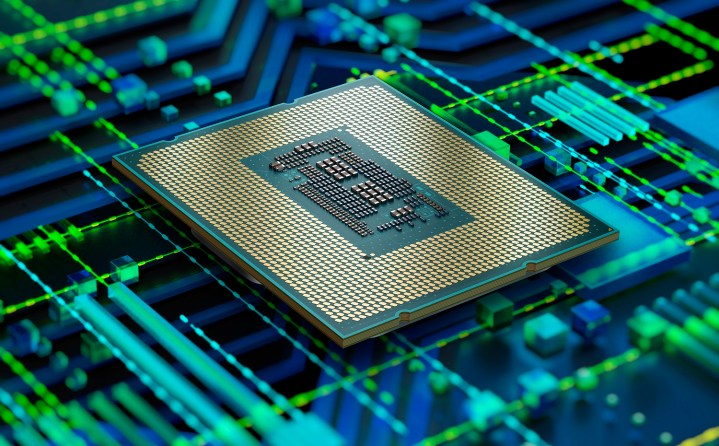
Alder Lake chips feature a thicker integrated heat spreader (IHS), which should give them more overclocking potential. Intel trimmed the die thickness and thermal interface material down to increase the IHS size, adding more bulk metal to the top of the chip for greater cooling potential.
Alder Lake marks the launch of Extreme Tuning Utility (XTU) 7.5, which allows you to tweak the ratio and voltage settings of Alder Lake’s P-cores and E-cores. You can overclock each of the cores independently. If you can’t be bothered, you can use Intel Speed Optimizer on the Core i9-12900K and Core i9-12900KF to add a moderate overclock with a single button.
In our testing, XTU boosted the chip to 5.0GHz all-core without increasing heat or power draw. With some manual tweaking, we managed a 5.4GHz overclock without much of a hassle, though it came carried a 300W power draw with it.
New socket and motherboards

Intel is moving to the Z690 platform with Alder Lake, which features the new LGA1700 socket. Many motherboard manufacturers, including Gigabyte, MSI, Asus, Colorful, and ASRock, have boards available with the new chipset and socket. Alder Lake supports DDR4 and DDR5, but as mentioned above, you won’t be able to use both on the same motherboard.
Z690 is Intel’s flagship chipset, but the company also has budget-focused options — H670, B660, and H610. These chipsets don’t support CPU overclocking and they come with fewer PCIe lanes. They still support Alder Lake’s other tentpole features, though, including DDR5 on the motherboard with the correct RAM slots.
DDR5 features the same number of pins as DDR4, but it has a different layout. Motherboard makers can choose which standard they want to support, and you can’t switch between them.
A new socket means a new layout for CPU coolers. Many CPU cooler makers, including Noctua, are offering free brackets that work with the LGA1700 socket. If you’re wondering what you need, make sure to read our guide on everything you need to upgrade to Intel 12th-gen Alder Lake.
Alder Lake mobile processors
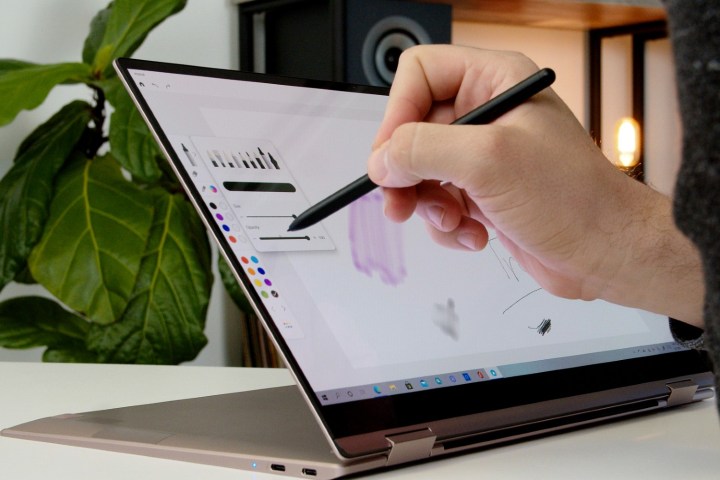
Alder Lake is a platform for Intel. The company is using the same name and architecture across its desktop and mobile releases, breaking from the launch cadence it has established. Intel has HX-series (55W), H-series (45W), P-series (28W), and U-series (15W and 9W) mobile chips available. Here’s how the range looks:
| Cores | Max boost frequency | Intel Smart Cache (L3) | Base power | |
| Core i9-12950HX | 16 (8P + 8E) | 5.0GHz | 30MB | 55W |
| Core i9-12900HX | 16 (8P + 8E) | 5.0GHz | 30MB | 55W |
| Core i7-12850HX | 16 (8P + 8E) | 4.8GHz | 25MB | 55W |
| Core i7-12800HX | 16 (8P + 8E) | 4.8GHz | 25MB | 55W |
| Core i7-12650HX |
14 (6P + 8E) | 4.7GHz | 24MB | 55W |
| Core i7-12600HX | 12 (4P + 8E) | 4.6GHz | 18MB | 55W |
| Core i5-12450HX | 8 (4P + 4E) | 4.4GHz | 12MB | 55W |
| Core i9-12900HK | 14 (6P + 8E) | 5.0GHz | 24MB | 45W |
| Core i9-12900H | 14 (6P + 8E) | 5.0GHz | 24MB | 45W |
| Core i7-12800H | 14 (6P + 8E) | 4.8GHz | 24MB | 45W |
| Core i7-12700H | 14 (6P + 8E) | 4.7GHz | 24MB | 45W |
| Core i7-12650H | 10 (6P + 4E) | 4.7GHz | 24MB | 45W |
| Core i5-12600H | 12 (4P + 8E) | 4.5GHz | 18MB | 45W |
| Core i5-12500H | 12 (4P + 8E) | 4.5GHz | 18MB | 45W |
| Core i5-12450H | 8 (4P + 4E) | 4.4GHz | 12MB | 45W |
| Core i7-1280P | 14 (6P + 8E) | 4.8GHz | 24MB | 28W |
| Core i7-1270P | 12 (4P + 8E) | 4.8GHz | 18MB | 28W |
| Core i7-1260P |
12 (4P + 8E) | 4.7GHz | 18MB | 28W |
| Core i5-1250P | 12 (4P + 8E) | 4.4GHz | 12MB | 28W |
| Core i5-1240P | 12 (4P + 8E) | 4.4GHz | 12MB | 28W |
| Core i3-1220P | 10 (2P + 8E) | 4.4GHz | 12MB | 28W |
| Core i7-1265U | 10 (2P + 8E) | 4.8GHz | 12MB | 15W |
| Core i7-1260U | 10 (2P + 8E) | 4.7GHz | 12MB | 9W |
| Core i5-1255U | 10 (2P + 8E) | 4.7GHz | 12MB | 15W |
| Core i5-1250U | 10 (2P + 8E) | 4.7GHz | 12MB | 9W |
| Core i5-1245U | 10 (2P + 8E) | 4.4GHz | 12MB | 15W |
| Core i5-1240U | 10 (2P + 8E) | 4.4GHz | 12MB | 9W |
| Core i5-1235U | 10 (2P + 8E) | 4.4GHz | 12MB | 15W |
| Core i5-1230U | 10 (2P + 8E) | 4.4GHz | 12MB | 9W |
| Core i3-1215U | 6 (2P + 4E) | 4.4GHz | 10MB | 15W |
| Core i3-1210U | 6 (2P + 4E) | 4.4GHz | 10MB | 9W |
| Pentium Gold 8505 | 5 (1P + 4E) | 4.4GHz | 8MB | 15W |
| Pentium Gold 8500 | 5 (1P + 4E) | 4.4GHz | 8MB | 9W |
| Celeron 7305 | 5 (1P + 4E) | N/A | 8MB | 15W |
| Celeron 7300 | 5 (1P + 4E) | N/A | 8MB | 9W |
In our testing, the flagship Core i9-12900HK wipes the floor with the competition. In some cases, we found the chip to be as much as 21% faster than the competing Ryzen 9 5900HX, and at times, it even rivaled a desktop Core i9-10900K. We haven’t reviewed lower-end SKUs, but the consensus among other reviewers is that they are also quite good, with AMD’s flagship Ryzen 9 5900HX losing even to the Core i7-12700H. This isn’t surprising since the Ryzen 9 5900HX only has eight cores, and while AMD’s Zen 3 architecture is quite good, it’s hard to compete when you’re six cores down.
AMD’s Ryzen 6000 chips are here, as are Intel’s new HX models, so the mobile market is still hot in the middle of 2022.
Editors' Recommendations
- The best budget CPUs you can buy in 2024
- It just became the perfect time to buy a last-gen Intel CPU
- Gamers are reportedly returning Intel Core i9 CPUs in droves
- Everything we know about Lunar Lake, Intel’s big next-generation chips
- Intel’s CPUs just got way more confusing




